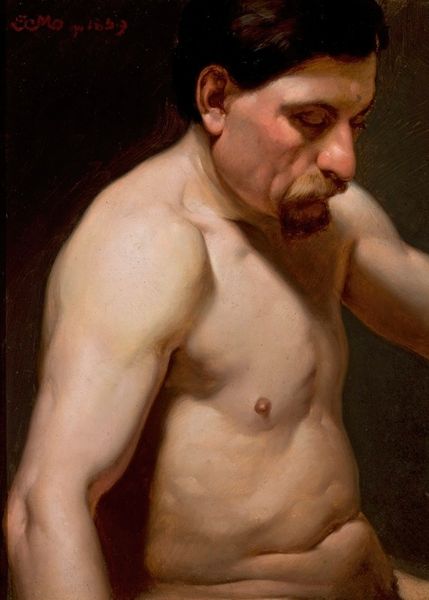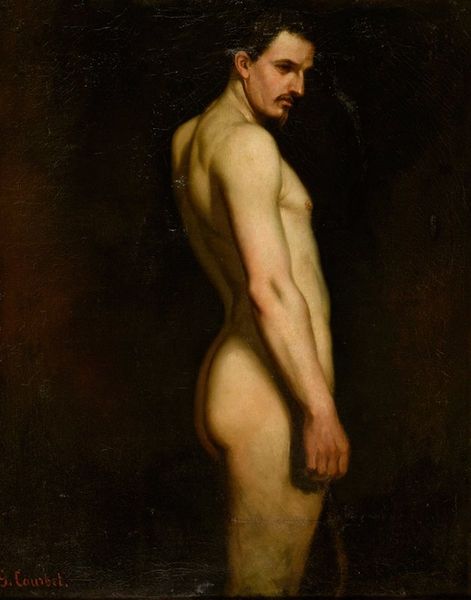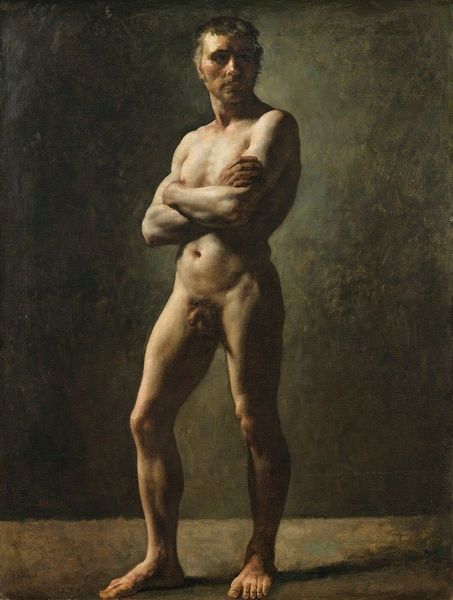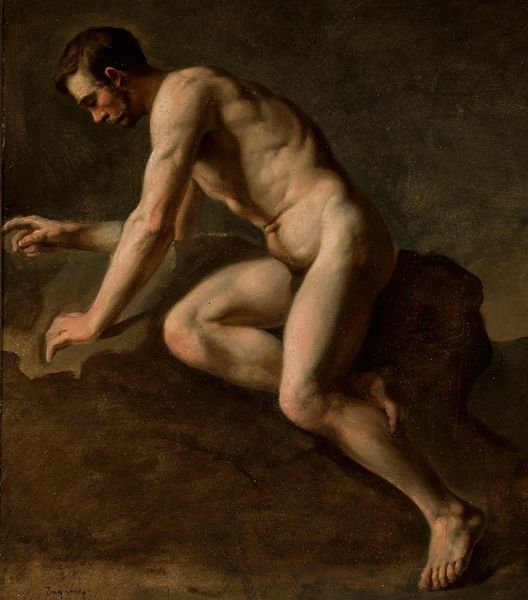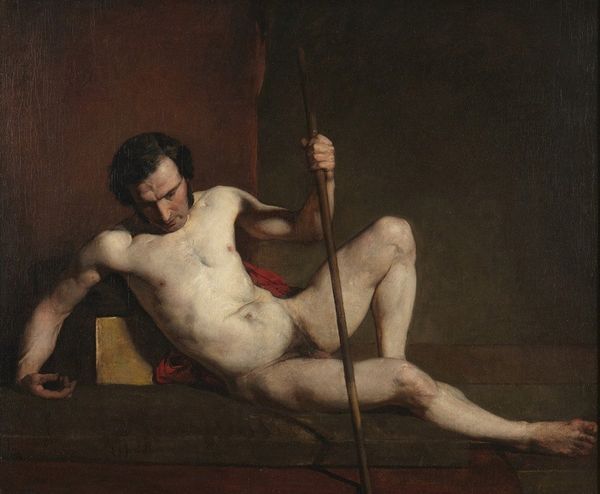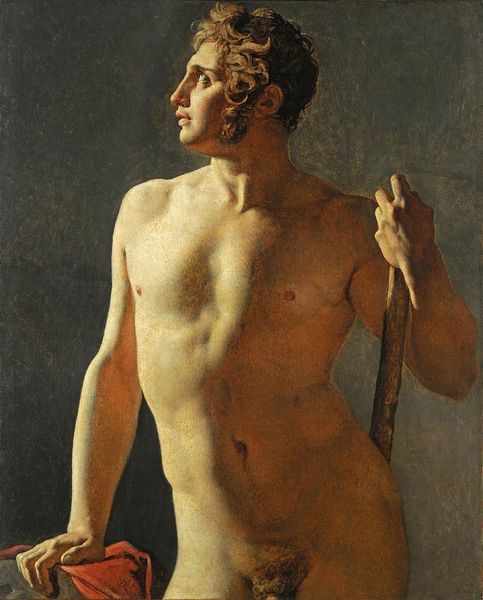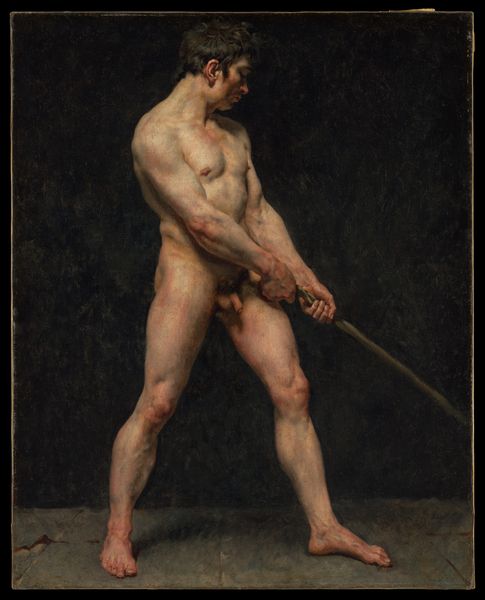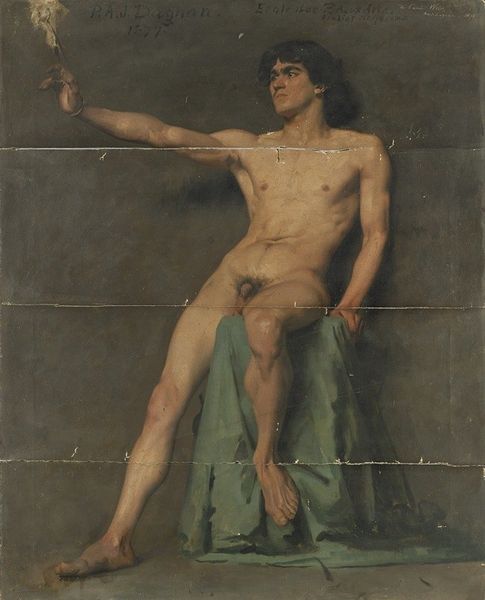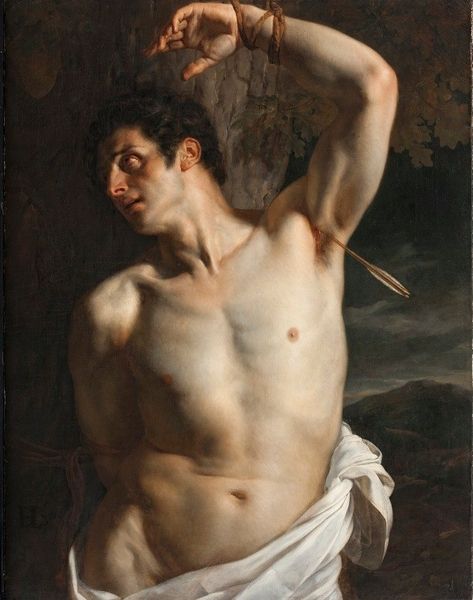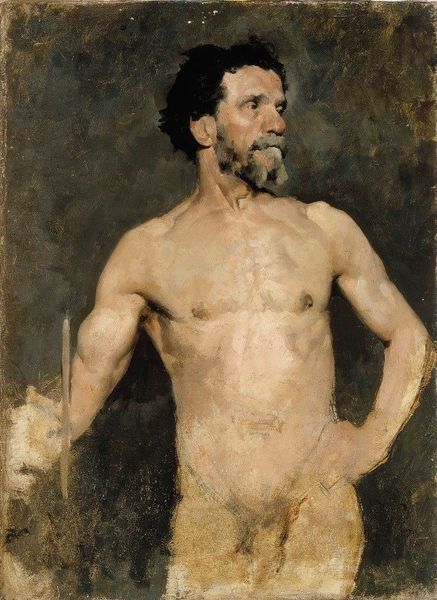
oil-paint
#
portrait
#
figurative
#
oil-paint
#
charcoal drawing
#
figuration
#
academic-art
#
charcoal
#
nude
#
realism
Copyright: Public Domain: Artvee
Curator: Standing before us is Jan Matejko's "Male nude – torso of a male figure," crafted in 1859 with oil paint. Editor: It strikes me as incredibly poised, yet unfinished. The sharp detail in the face juxtaposed against the more suggestive strokes forming the torso... it gives off a mood of powerful vulnerability, wouldn't you say? Curator: Absolutely. Nudes have, for centuries, symbolized not just physical beauty, but a sort of Platonic ideal of humanity. Matejko, I believe, is channeling this tradition, focusing on the face's character to elevate the sitter beyond mere physicality. The dark background, often used for studio works, directs the eye entirely toward the male subject. Editor: But that directness also raises questions of accessibility and power. A nude portrait, particularly a male nude during that period, engages with societal perceptions of masculinity and the male gaze, doesn’t it? Who was this work intended for? Was it an exercise, or a statement? Curator: I'd argue it's a study in classical form interpreted through a modern lens. You see elements of realism that steer away from the complete idealization of the subject; notice the asymmetry in the physique. These details allow Matejko to comment on individuality, human fallibility even. Editor: Still, framing this within 19th-century Polish society—did this departure challenge existing norms around masculine representation, even subtly? And how did the artist's other socio-political concerns potentially intersect here? The symbol might not just be art and beauty; the symbolism expands when connected to Matejko as a painter-activist, painting within very tense moments in Polish history, using symbolic figures, perhaps in subversive ways. Curator: A compelling proposition, certainly. Considering Matejko's involvement in historical painting, it’s hard not to read symbolic intent into his aesthetic choices. But perhaps its primary impact stems from its place within art history – as a bridge between established academic traditions and more personal expressions of realism. Editor: Ultimately, though, it forces a reckoning, doesn't it? We’re left to reconcile the intimate, the aesthetic and the socio-political reverberations embedded within a 'simple' nude. Curator: Exactly, it continues to inspire reflection on beauty, strength, vulnerability, and our continuing dialogue around these concepts across generations.
Comments
No comments
Be the first to comment and join the conversation on the ultimate creative platform.
